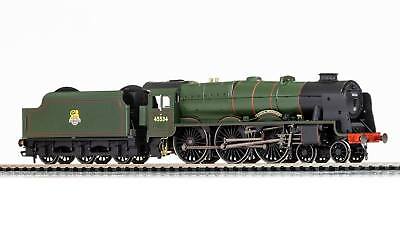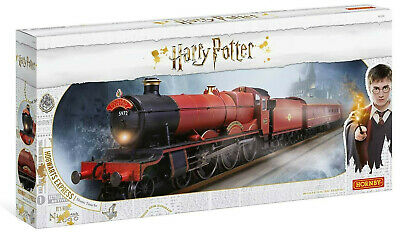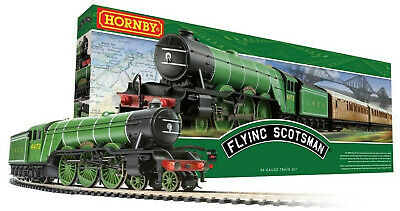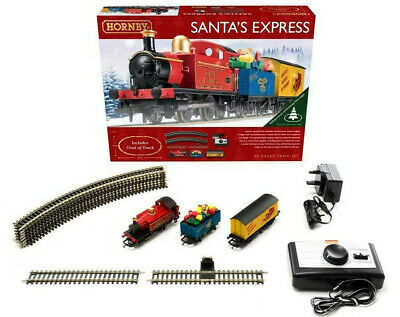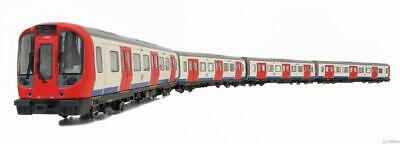-40%
Hornby R3633,BR, Patriot Class, 4-6-0, 45534 'E. Tootal Broadhurst' - Era 4
$ 71.55
- Description
- Size Guide
Description
R3633,
BR, Patriot Class, 4-6-0, 45534 'E. Tootal Broadhurst' - Era 4
Description
Based on the chassis of the Royal Scot class, with the boiler from the large Claughton class, the ‘Patriot’ class of locomotives was the London Midland and Scottish Railway’s approach to building a ‘Second Division’ 5X designation locomotive at the beginning of the 1930s, a role that would later be mainly fulfilled by the Jubilee class.In October 1930, the Locomotive Committee of the LMS gave the go-ahead to Sir Henry Fowler for the rebuilding of two Claughton locomotives, Nos.5971 and 5902, into a new class by utilising new frames, spare tenders and an existing type of boiler.
‘Rebuilding’ was an LMS accounting term that avoided having to class the locomotive building under capital expenditure and of the fifty-two Patriots built, only the last ten were classed as new builds.In November, the two re-built engines emerged from the works at Derby with a 5XP classification and due to their similarities and secondary roles in traffic they were immediately dubbed as ‘Baby Scots’. A further forty of these ‘complete renewals’ were built in four lots, mainly at Crewe, between 1932 and 1934, with a final ten ‘new’ locomotives, to Lot 96, being built at Crewe in 1934. In tests, the ‘Baby Scots’ proved themselves to be very good engines, with a tidy coal consumption.Because the re-built locomotives kept the numbers of the Claughtons that they replaced, the numbering system was messy and it was not until 1934 that the LMS renumbered the class in the 55xx range. Two of the original Claughton class bore the name ‘Patriot’, with its deep symbolism and in 1937, with public and private support, the LMS decided that locomotive 5500 should have the name passed to it, allowing the class to be referred to as ‘the Patriots’.
In August 1945, the LMS authorised the rebuilding of eighteen Patriots to 6P classification to meet the post-war needs of accelerated express passenger services. This was achieved by the fitting of 2A taper boilers and necessitated the replacement of the 3,500 gallon Fowler tender with a 4,000 gallon type. The opportunity was also taken to replace the rather narrow cab with a wider Stanier type.In all, fifty-two examples were built and whilst there were changes and improvements during the latter Stanier period and into the Ivatt, the introduction of BR Standard types was to force the classes withdrawal, particularly where the unconverted Patriots were concerned.
Withdrawal commenced in September 1960 with 45502 Royal Naval Division, the last of the class, 45530 Sir Frank Ree, being withdrawn in December 1965. None were saved for preservation. 5534 E. Tootal Broadhurst was rebuilt at Derby in April 1933 and re-entered traffic at Leeds later that month. Allocations to Longsight and Edge Hill followed, before the 6P conversion with the 2A tapered boiler came in December 1948, the penultimate Patriot to be converted. Now numbered 45534, E. Tootal Broadhurst was withdrawn from Crewe North in May 1964 after a period of storage.
Gauge
00
Length
259mm
DCC Type
DCC Ready
Period
Era 4 (1948 - 1956)
Operator/Livery
Early BR, BR Lined Green
Designer
Henry Fowler
Entered Service
1933
Minimum Curve
2nd Radius + (438mm)
Age Suitability
14+
Motor
5 Pole Skew Wound. Loco Drive
